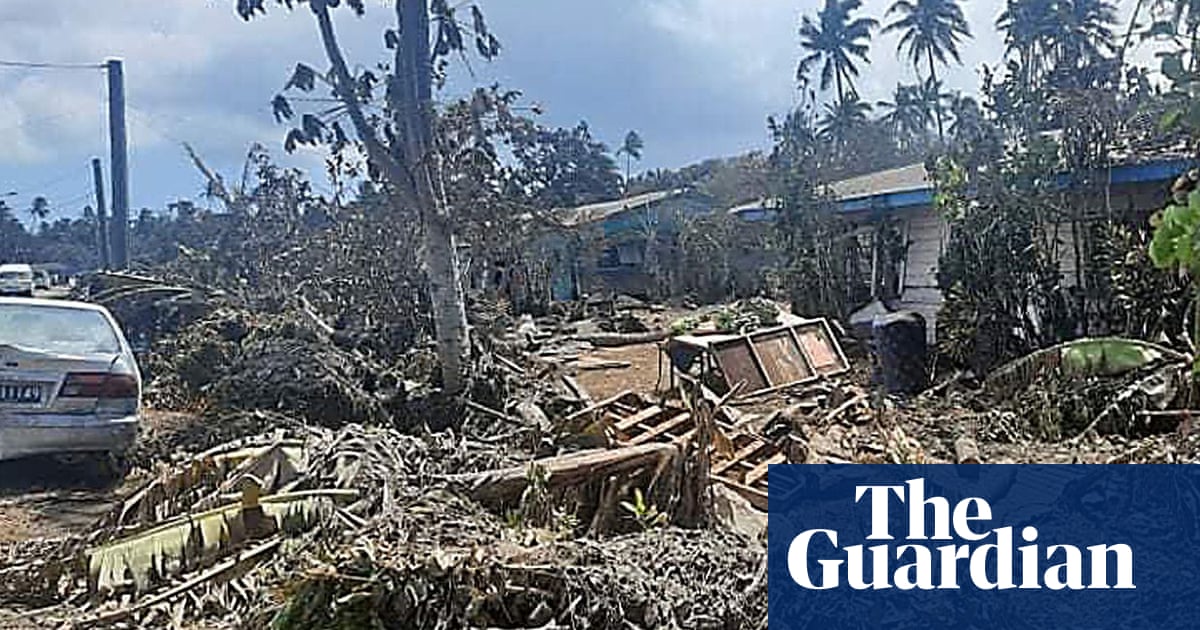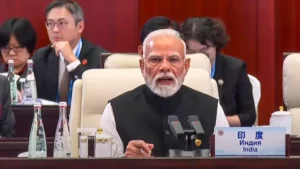New photos show Tonga tsunami devastation as first aid plane arrives from New Zealand
Fresh pictures of the devastation in Tonga have emerged five days after an enormous volcano eruption and subsequent tsunami cut off contact with the outside world, as the first plane carrying international aid landed.
A series of photos tweeted by the Tongan consulate late on Wednesday show trees and buildings flattened and covered in ash. Others show debris piled up outside homes and damaged vehicles.
“Nuku’alofa, the ‘city’ of The Kingdom of #Tonga, covered in volcanic ash,” the consulate wrote.
A state of emergency has been declared in the country until 13 February, the Tongan government announced.
The release of the new photos came hours before a New Zealand Defence Force plane landed following what Rear Admiral Jim Gilmour, commander of Joint Forces New Zealand, said was a “mammoth effort” to clear ash from the runway of Tonga’s international airport by hand.
Photos : Nuku’alofa, the “city” of The Kingdom of #Tonga, covered in volcanic ash. 
He said strict no-contact protocols would be adhered to as aid supplies were unloaded because “we’re very respectful that the last thing Tonga would need now is a Covid outbreak”. The island nation has so far recorded just one case of the virus. A further flight could be sent as soon as Saturday.
The HMNZS Wellington was also expected to arrive on Thursday and survey the harbour to ensure its safety ahead of the arrival of the larger HMNZS Aotearoa on Friday, which is carrying supplies including 250,000 litres of water and a desalination plant.
Australia sent an air force plane that arrived on Thursday loaded with essential supplies including protective equipment and shelter materials, and the government said it expected to send a naval vessel loaded with equipment including helicopters either later Thursday or on Friday.
China’s president Xi Jinping said Beijing was ready to provide as much support as its capacity allowed, according to news outlet Xinhua.
Telephone links between Tonga and the rest of the world were also partially restored on Thursday, though restoring full internet connectivity is likely to take a month or more according to the owner of the archipelago’s sole subsea communications cable.
Speaking from the capital, Nuku’alofa, local journalist Marian Kupu told Reuters Tongans were in the process of cleaning up all the dust but feared they may run out of drinking water.
“Each home has their own tanks of water supply but most of them are filled with dust so it’s not safe for drinking,” Kupu said.
Latest pics from #Tonga – courtesy of local journalist Marian Kupu of Broadcomm Broadcasting (she’s on FB if media want to talk to someone on the ground). So happy to see the Pacific spirit in effect! @DigicelTO international calls now possible #Tonga #TongaVolcano #tongatsunami pic.twitter.com/Pp5jMAT8xH — Josephine Latu-Sanft (@JoLatuSanft) January 19, 2022
Kupu said a few villages on the western side of Tonga were very badly hit.
“I won’t say we are expecting more deaths but as we are speaking the government is trying to fly to the other islands to check over them,” she said.
When asked if there was enough food supplies, she said: “I can say maybe we can survive for the next few weeks but I’m not sure about water.”
An image tweeted by the Tongan consulate shows flattened trees and a damaged building. Photograph: Consulate Of The Kingdom Of Tonga/ZUMA Press Wire Service/REX/Shutterstock
The United Nations said that about 84,000 people, more than 80% of the population, had been badly affected by the disaster.
“They have been affected through loss of houses, loss of communication, what we understand is the issue with the water,” UN spokesperson Stephane Dujarric told reporters. “Water is really the biggest life-saving issue. Water sources have been polluted, water systems are down.”
The Hunga Tonga-Hunga Ha’apai volcano erupted about 40 miles (65 km) from the Tongan capital with a blast heard 2,300 km (1,400 miles) away in New Zealand, and sent tsunamis across the Pacific Ocean.
Waves reaching up to 15 metres (49 feet) hit the outer Ha’apia island group, destroying all the houses on the island of Mango, as well as the west coast of Tonga’s main island, Tongatapu, where 56 houses were destroyed or seriously damaged, the prime minister’s office said. The UN said the evacuation of people from these islands was under way.
Three people were confirmed to have died in the disaster.










